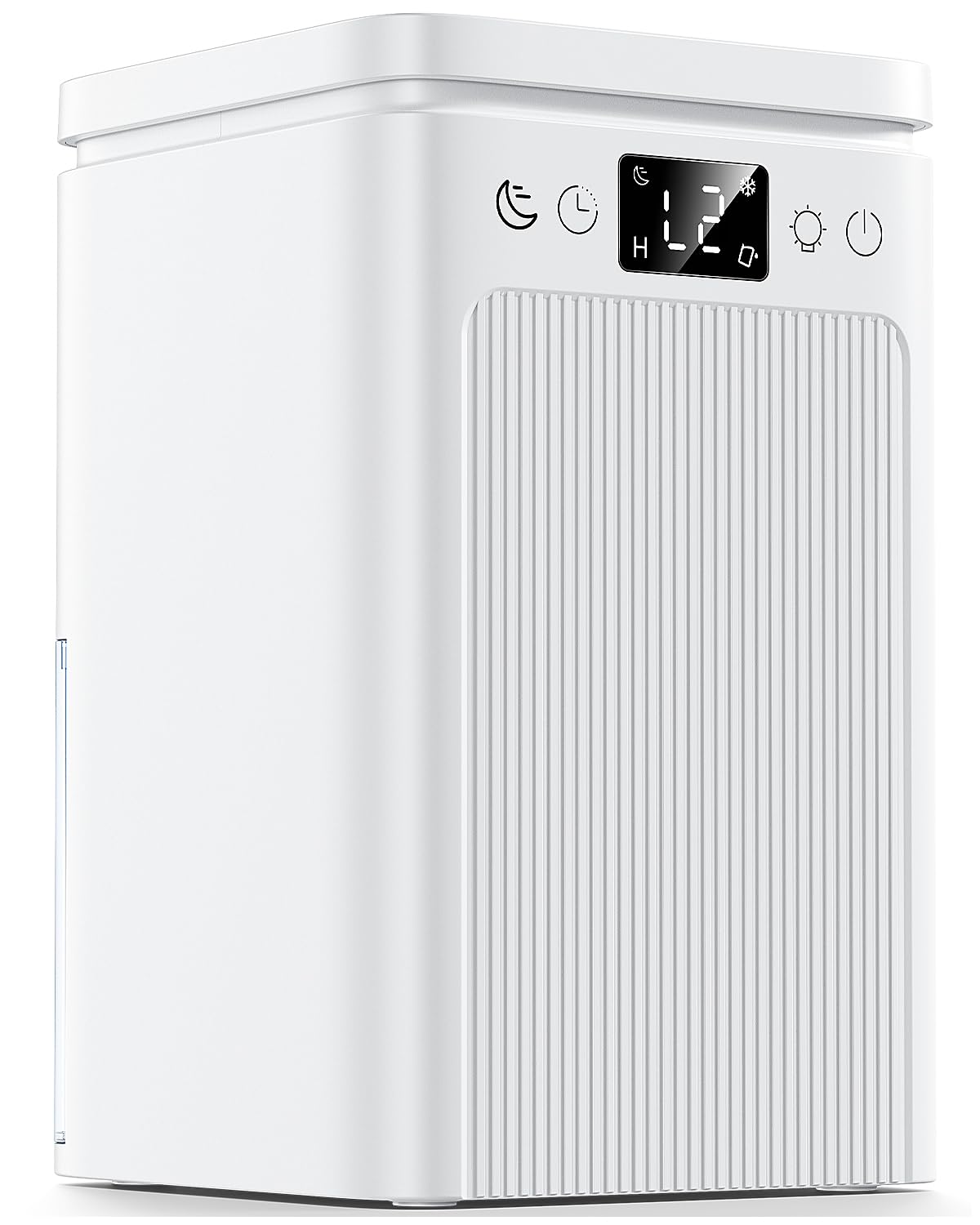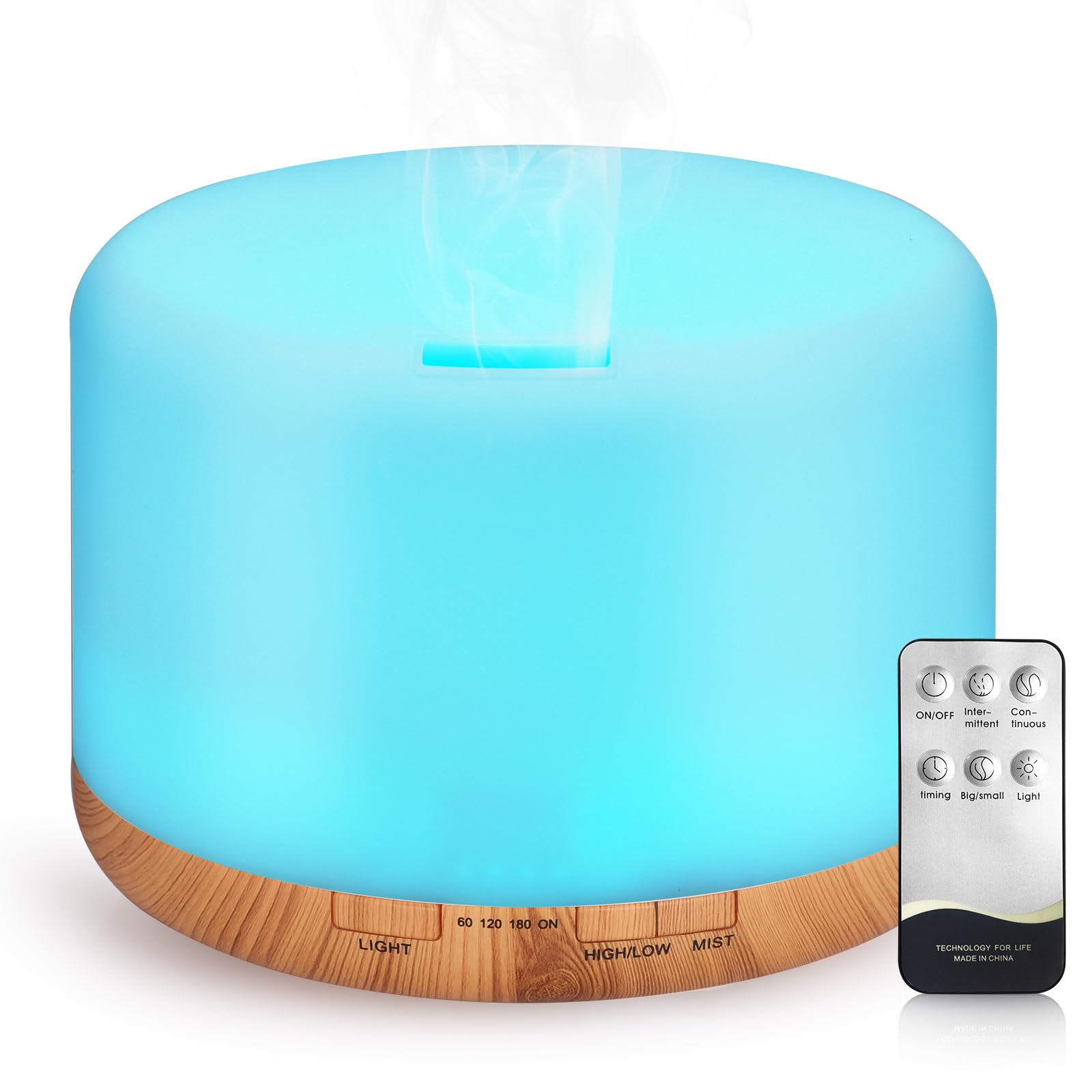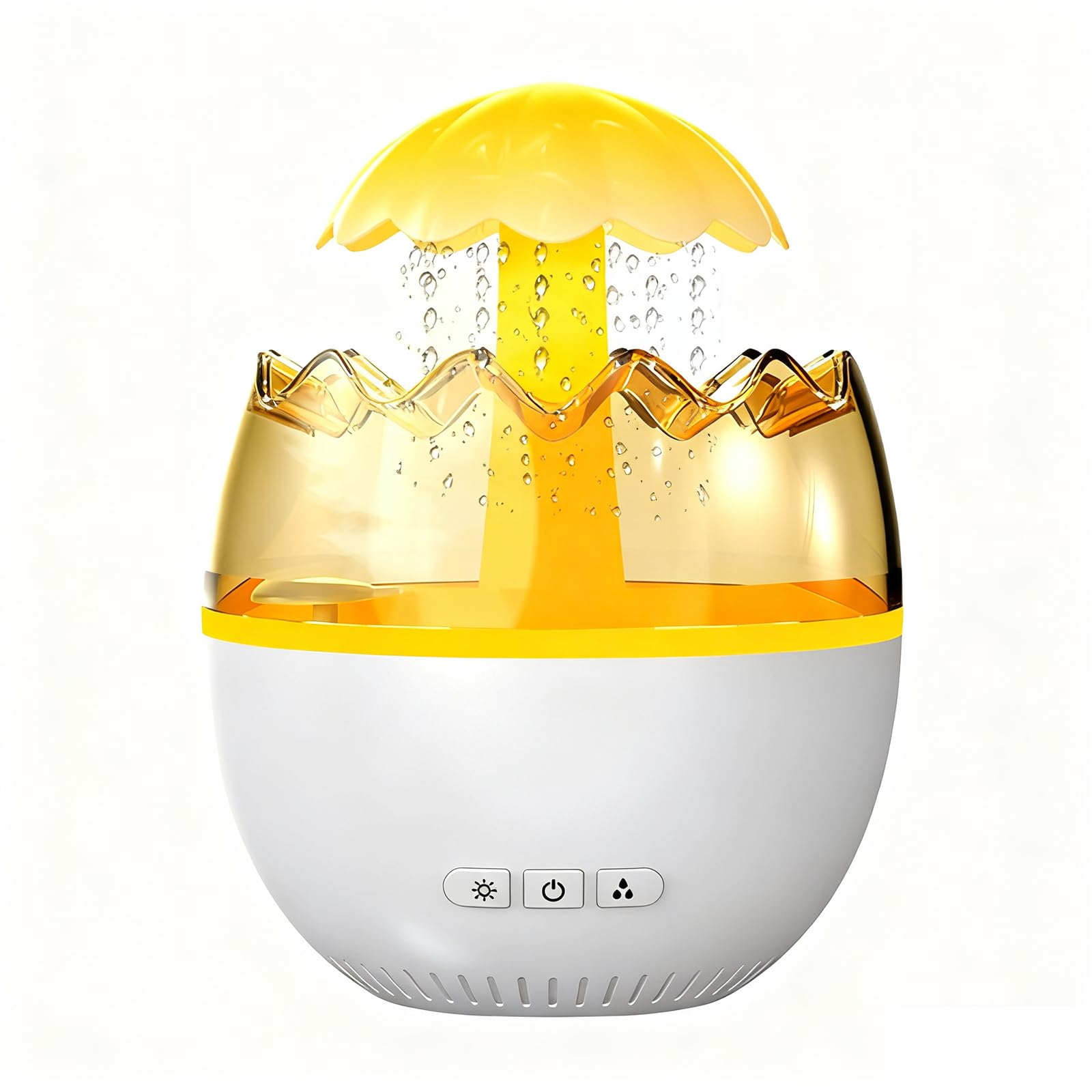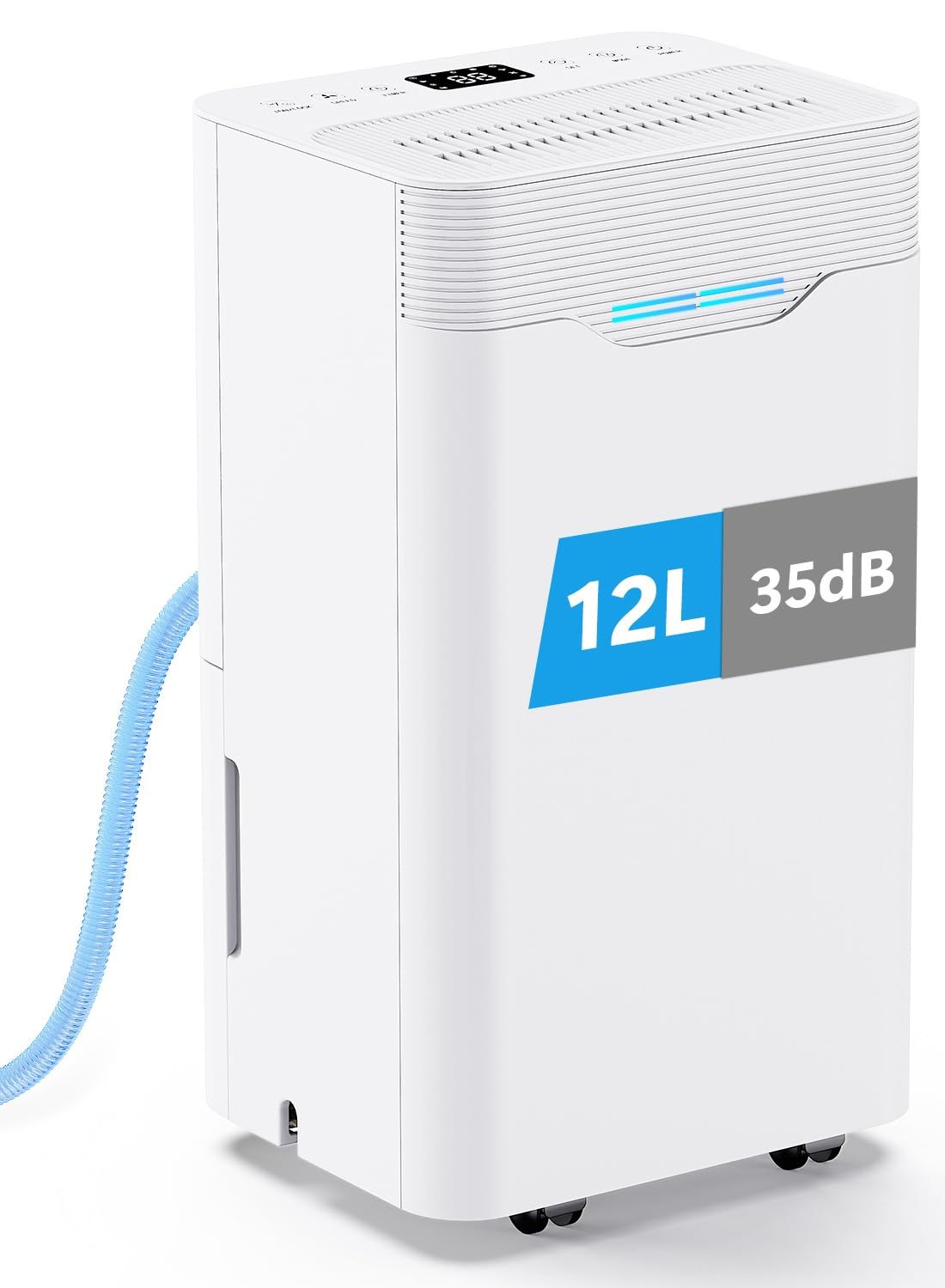Drying clothes indoors is a fact of life in many UK homes, especially in winter. A dehumidifier with a laundry mode can speed up drying, reduce musty smells, and cut condensation on windows. This guide explains how laundry mode works, where to place the unit and the airer, typical drying times, and simple room setups that give you fresher results with less energy.
Dry bedrooms benefit from humidifiers sized for the space.
How laundry mode works
Most dehumidifiers work by drawing damp air across a cooled surface so moisture condenses and drips into the tank. Laundry mode usually runs the fan and compressor at a higher duty cycle and ignores the target humidity so it can pull moisture faster. Combine that extra airflow with a good position near the clothes and you will notice shorter drying times and less condensation on glass.
Where to place the unit and the airer
Place the dehumidifier in the same room as the clothes and as close as is practical, usually within a metre or two. Keep the back and sides of the machine clear so air can circulate. Angle the airer so the machine draws air across the damp side of the fabric. If the model has a louvre, direct the flow along the row of clothing rather than straight into a wall.
Room setup that speeds up drying
Use a smaller room if you can, such as a spare bedroom or utility area. Close the door to stop moisture spreading around the house, then let the dehumidifier work the local air repeatedly. If the room becomes stuffy, crack a window for a short period to refresh the air and reduce odours, then close it again so the machine does not chase outside humidity for hours.
Typical drying times
Drying time depends on fabric, load size, room temperature, and machine capacity. As a rough guide, a medium load on an airer may take 6 to 10 hours with a capable 10 to 20 litre class machine in laundry mode. Thicker cotton items and heavy denim can take longer. Rotate the airer arms once or twice so the same garments are not hidden from the airflow for the entire session.
Avoiding musty smells
Musty smells come from slow drying and poor airflow. Spread clothes with gaps between items rather than bunching fabric. Wring out excess water before hanging. Clean your dehumidifier’s filter regularly, empty the tank before it reaches the full line, and keep the room free of damp corners where stagnant air lingers. If humidity is high to start with, run the machine for 20 minutes before putting washing on the airer so the room begins to dry immediately.
Energy tips for laundry mode
Shorten run time by choosing a warm room and spacing garments well. Use hangers so shirts dry flat and expose more surface to the air. If your machine supports a hose, continuous drainage saves tank trips and keeps the unit running at its most effective pace. Many people set up an overnight cycle and wake to clothes that are ready to put away.
Condensation and household humidity
Hanging washing in a living room or bedroom can drive humidity up quickly. If your windows mist in winter, aim to dry in a spare room with the door closed and the machine running in laundry mode. A cheap hygrometer shows your progress. Aim for around 45 to 55 percent relative humidity during the day. Once you are back in range, switch the unit to a normal mode or turn it off.
Care, filters, and long-term freshness
Rinse or vacuum the dust filter regularly so airflow stays strong. Wipe the tank and float to keep the water path clean. If your home is very damp, consider an antibacterial laundry rinse for clothing and run the dehumidifier for a short period after you remove the washing to dry the room itself. Good habits keep both the clothes and the room smelling fresh.
Units with strong laundry performance and good humidistats appear in dehumidifiers that dry clothes quickly. If air then feels dry, balance the room with breathable bedding and, where dust rises with airflow, a sealed‑filter air purifier.
FAQs
Where should I put a dehumidifier to dry clothes?
In the same room as the airer and as close as safely possible. Keep the unit’s intakes clear and direct airflow across the fabric rather than into a wall.
How long does a load take to dry with a dehumidifier?
Often 6 to 10 hours for a medium load in a warm, closed room with a capable machine. Heavy fabrics can take longer. Good spacing and airflow shorten the time.
Should I open a window when drying with a dehumidifier?
Keep the room closed most of the time so the unit works the same air repeatedly. If the room becomes musty, open a window briefly to refresh the air, then close it again.





